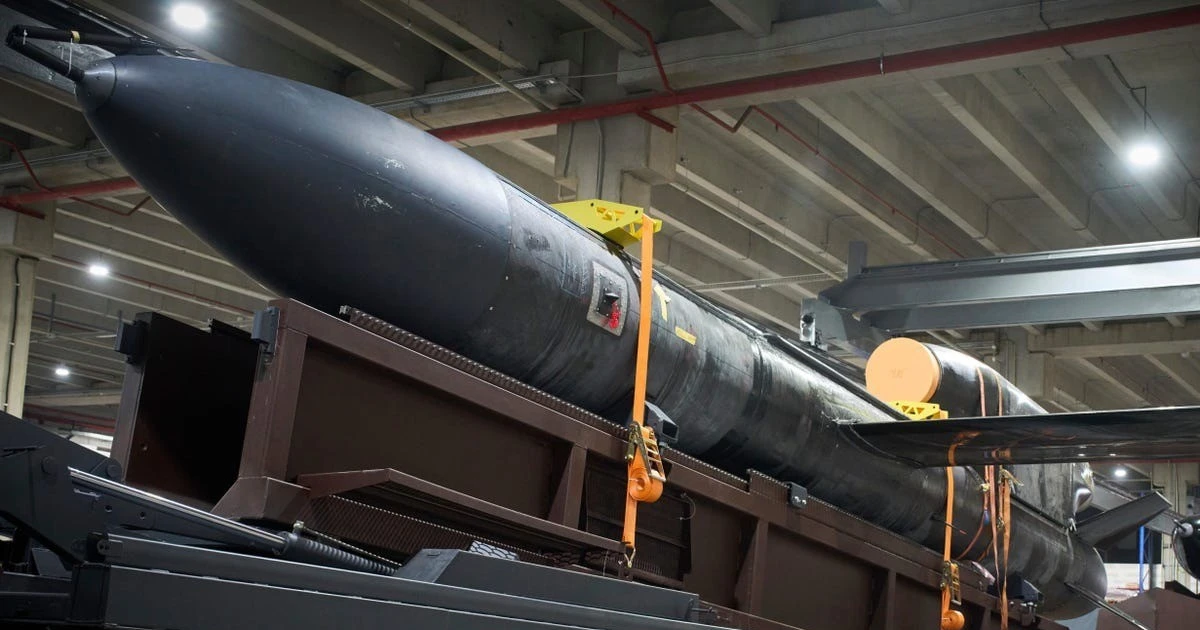Deepankari, a professional working in Dubai, began experiencing strange and severe leg pain. The pain was so severe that she could not walk properly at work. Her family took her to many hospitals and doctors, but no one could find a physical cause. Strangely, the pain subsided when she returned home.
Her schedule is a series of days that last from 9am to 9pm. “I am not required to work 12 hours, but I think the company needs me and without me, the business will not run,” she shared.
Deepankari had no idea that her body was sending out desperate distress signals from what experts now call “quiet cracking.” She was still performing her job, still a dedicated employee in the eyes of others, but inside, she was slowly crumbling.
Deepankari's story is not an isolated incident but a slice of a hidden crisis that is spreading across offices around the world .
Decoding “quiet cracking”: The invisible enemy more dangerous than burnout and quiet quitting
In the modern workplace lexicon, we’re familiar with “burnout”—a state of burnout in ambitious people—and “quiet quitting”—when employees just work to keep up with their responsibilities. Now, a new, more sophisticated concept has emerged: “quiet cracking.”
As defined by learning management company TalentLMS, silent burnout is a process where job satisfaction is eroded from within. Psychologist Aida Suhaimi from Medcare Camali Clinic further explains that it is a gradual process of mental and emotional deterioration, while the employee’s appearance remains stable.
Imagine a porcelain plate that begins to develop tiny cracks, invisible to the naked eye. It still holds its shape, still holds its contents, until one day, with just a slight impact, it shatters. That's exactly what happens to people with "silent cracks."
“Quiet cracking” is different from “burnout” and “quiet quitting.” “Burnout” often manifests itself as fatigue, overwhelm, and a marked decline in performance. Conversely, a person who is “quiet cracking” can still maintain high productivity, even being a top performer. The price is increasingly severe internal damage.
“Quiet quitting” is a conscious act of reducing effort to protect oneself. Meanwhile, “quiet cracking” is more dangerous because the employee is still working hard, but has lost all connection, motivation and meaning to the job. They are “burning out” from the inside.
The prevalence of this phenomenon is alarming. A TalentLMS survey of 1,000 US employees found that 54% have experienced symptoms of “quiet cracking,” and 20% struggle with it regularly. Gallup’s 2025 report found similar numbers: 52% of North American employees are disengaged at work. This isn’t a generational problem, but a seismic shift that’s affecting every level of the organization.

"Quiet cracking" is a form of silent disconnection that leads to decreased productivity (Photo: Getty).
The Roots of Underground Cracks
“Quiet cracking” does not appear naturally. It is the cumulative result of a series of negative factors in the working environment that many people encounter but few people recognize in time.
One of the biggest reasons is the feeling of not being recognized and not seeing a future in the job. When employees don’t see a clear path to advancement or a specific goal to strive for, they start to wonder, “Is this job even meaningful?” According to Kickresume co-founder Peter Duris, the feeling of not being recognized or appreciated for your efforts is a silent poison that saps motivation.
Feeling out of control is also a dangerous factor. Professor Wayne Hochwarter notes that when employees are not empowered to make decisions at work, especially under poor leadership (managers who lack the ability to listen and solve problems), they fall into a state of disconnection, trapped in a “perfect storm” of helplessness.
Constant uncertainty also contributes to low employee morale. Fear of being fired, replaced by artificial intelligence, or simply not understanding one’s role, as 15% of employees surveyed said, creates a work environment that is always tense.
Finally, there is the growing pressure of the new era. Nearly a third of employees say they are overwhelmed by their workload. Not only are they facing deadlines and KPIs, they are also besieged by social anxiety, negative news, a sense of chaos from the outside world, and especially the fear of being replaced by artificial intelligence (AI). All of this combines to silently erode their mental health and push them to the brink of collapse. "In the past, people went to work on Monday feeling ready. Now they feel tired before they even get to the office," Hochwarter commented.
Early warning signs
Because “quiet cracking” occurs silently and subtly, early recognition of the signs is crucial for timely intervention.
According to psychologist Aida Suhaimi, this process often begins with a withdrawal from social interactions. Employees become quiet, avoid communicating with colleagues, and are no longer enthusiastic about contributing ideas in meetings as before. Gradually, they lose their enthusiasm for work. Initiative disappears, replaced by a reluctance to take on new projects and work like a machine, only to complete minimal responsibilities.
A negative attitude is also a telltale sign. People who are “quiet cracking” often become irritable, cynical, sarcastic, or complain about seemingly small things — from internal processes to company policies.
Their work may still be productive, but subtle cracks begin to appear. More small errors occur, and the product lacks the meticulousness, care, and depth it once had.
Finally, there are the physical and mental manifestations. Employees often take sick leave, complain of insomnia, and feel chronically tired. In some cases, as with Deepankari, they may experience unexplained physical symptoms—a form of the body’s response to unresolved psychological stress.

There is no single cause for "quiet cracking" but it is the result of a "perfect storm" of many factors in the workplace (Photo: Moneycontrol).
Professor Wayne Hochwarter from Florida State University (USA) said he often sees this phenomenon in new graduates after about 3-5 years. They start with full enthusiasm, but then wonder: "Is this the right path?".
But quiet cracking spares no one. It’s especially dangerous for perfectionists and high performers. “I just wanted to be perfect at work,” says Aditi Chaturvedi, a former Dubai resident. “I did everything to the best of my ability, and then I realized I had no life outside of work.” They get stuck in a form of “high-performance depression” — performing well to mask the anxiety, stress, and fear of failure inside.
Professions that require constant interaction and empathy, such as healthcare, education , and customer service, are fertile ground for quiet cracking. Many nurses say they have lost their love for their jobs because they spend too much time on administrative procedures instead of caring for patients. Teachers are pressured to “teach to the test” and their creativity is limited. They fall into a state of “empathy burnout” – tired of constantly dealing with other people’s emotions and problems.
“Silent rifts are not just a morale issue, they’re a business issue,” the TalentLMS report concludes. When employees silently rift, they take productivity, creativity, and loyalty with them as they leave the organization.
The damage is huge. According to Gallup, disengaged workforces cost global businesses $8.8 trillion a year. That comes from lost productivity, higher turnover, increased sick days, and skyrocketing health care costs. But more dangerous than money is the erosion of corporate culture, the suppression of innovation, and the destruction of long-term organizational health.
When these cracks are ignored for too long, they can lead to an explosive outcome: “revenge quitting.” This trend is on the rise, especially among Gen Z. “Workers are purposely quitting their jobs in the most disruptive way possible to protest how they’ve been treated,” says content creator Ben Askins.
These actions can range from skipping a shift when the staff is severely understaffed, to deleting important documents, plunging the business into a crisis. It is a final cry of anger after a long period of suffering in silence.
Healing the Cracks: The Root Solution
Addressing quiet cracking cannot be done with a few “wellness” seminars or empty words of encouragement. Sarah Brooks, CEO of FikrahHR, stresses that change must come from the top. “Preventing quiet cracking is not a one-day campaign, but a long-term strategy for retaining talent,” she says.
For businesses:
Retrain managers: Gallup points out that managers themselves are one of the least engaged groups. Companies need to train them in listening skills, recognizing signs of stress (both physical and emotional), and conducting effective one-on-one conversations.
Build a culture of recognition and development: Publicly recognizing even the smallest efforts is a low-cost but extremely effective method. At the same time, build clear learning and advancement paths so employees can see their future in the organization.
Creating a safe psychological environment: Sarah Brooks, CEO of FikrahHR, emphasizes building an anti-bullying policy that encourages candid feedback without fear of retaliation.
Ask the right questions: Instead of just asking about KPIs, leaders need to ask: “How are you really feeling?” Use anonymous surveys, but more importantly, act on that feedback.

Similar to previous trends of “quiet quitting” or “quiet vacationing,” “quiet cracking” reflects the growing sense of insecurity among workers in the current economic climate (Photo: Getty).
For individuals:
Be proactive: The best thing you can do is talk to your manager about your feelings and difficulties.
Take care of yourself: According to Professor Hochwarter, you must proactively take care of your physical and mental health, looking for opportunities to recharge.
Look for a change: Sometimes the best solution is to consider moving to a different department or finding a new job if the current environment is too toxic and beyond repair.
“Quiet cracking” doesn’t happen overnight, but rather it’s a silent cry that builds up over months and months when we’re too busy to realize that we’re “not okay.” As expert Rahaf Kobeissi puts it: “ Don’t just look at the results your employees produce, look at what they’re suffering.”
Making emotional health a core part of your corporate culture is no longer a “nice to have” option. In the new era, it is a vital strategy for retaining talent and ensuring the sustainable development of the organization. Because when an employee fails, it is not their failure alone, but the failure of the entire leadership system.
Source: https://dantri.com.vn/kinh-doanh/ran-nut-tham-lang-de-doa-moi-nguy-hiem-hon-trao-luu-nghi-viec-im-lang-20250808143808359.htm









![[Motion Graphics] 14 items exempted from corporate income tax](https://vstatic.vietnam.vn/vietnam/resource/IMAGE/2025/8/22/29a6b00358de452488c5e1dcbc0b377d)


















![[Photo] New look of the coastal city on the Han River](https://vstatic.vietnam.vn/vietnam/resource/IMAGE/2025/8/22/26f58a4a29b9407aa5722647f119b498)



































































Comment (0)